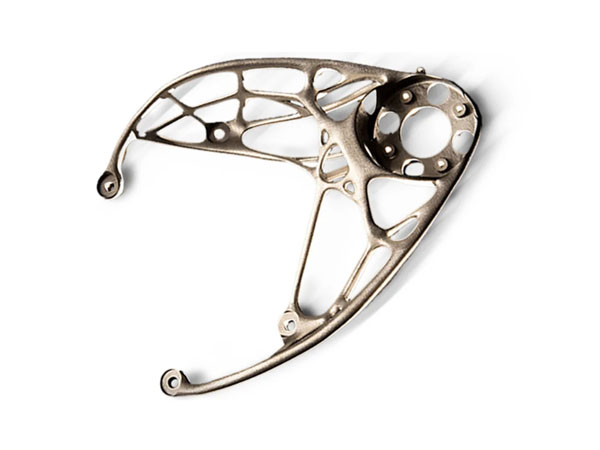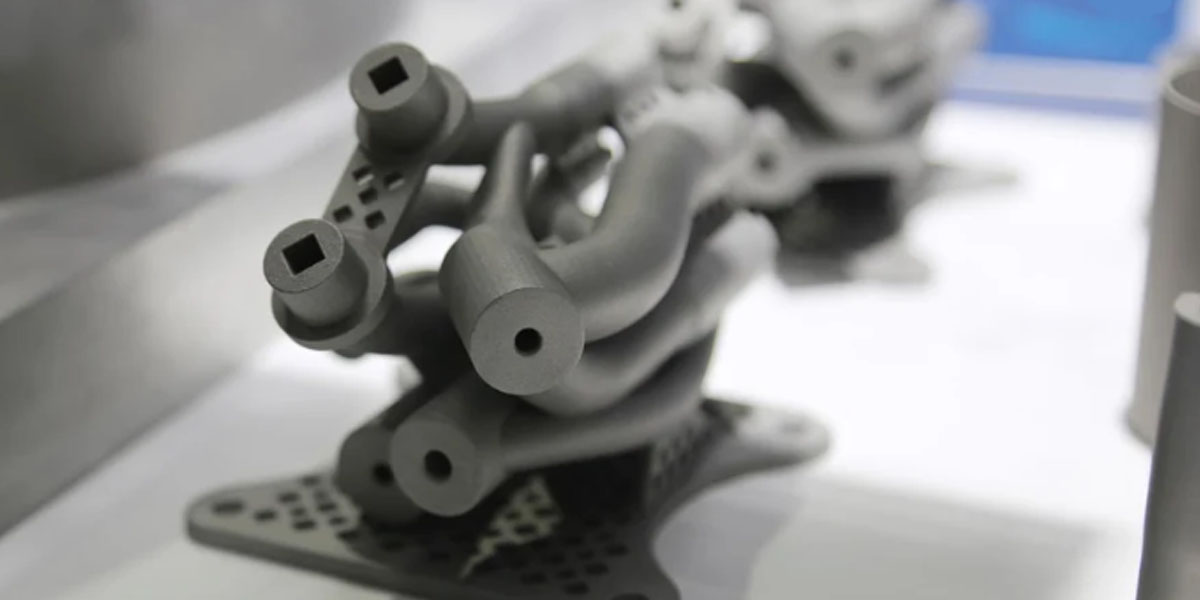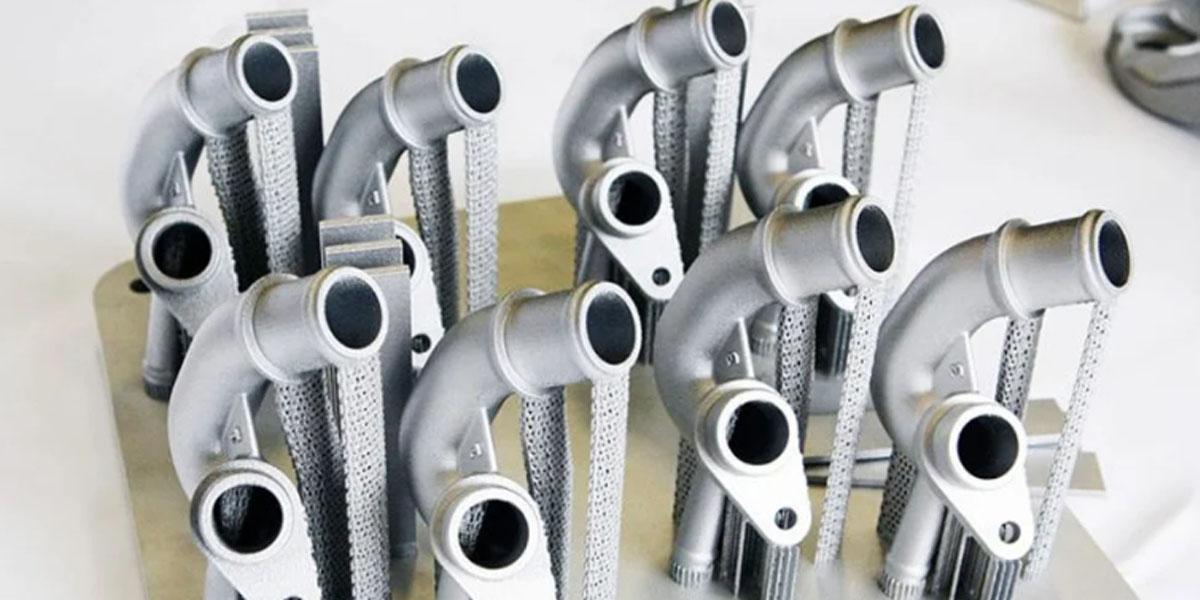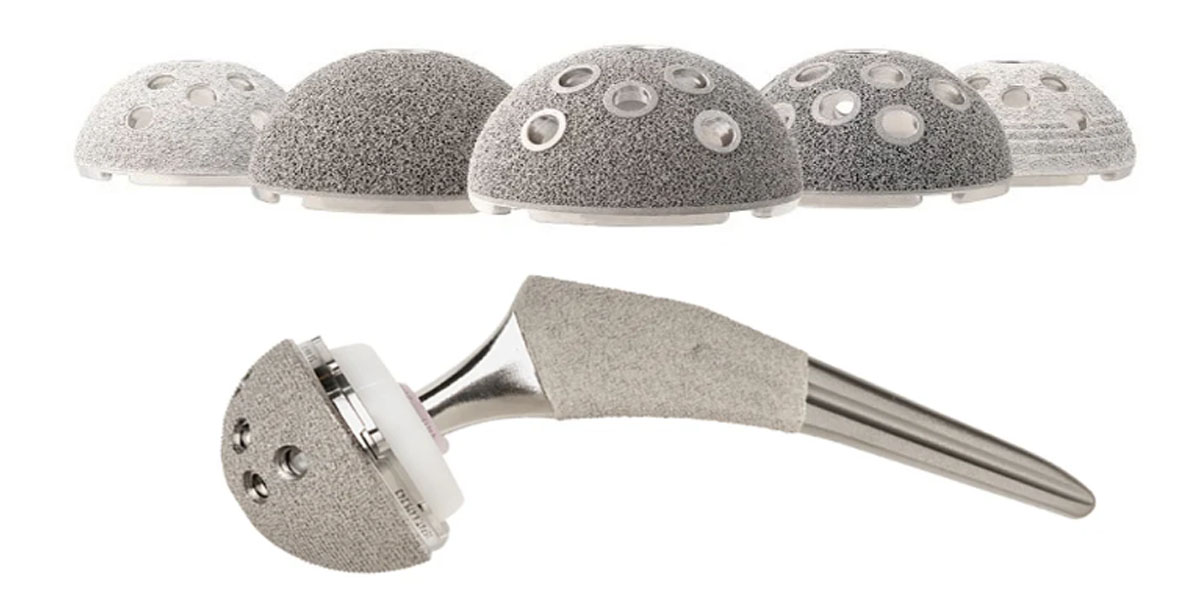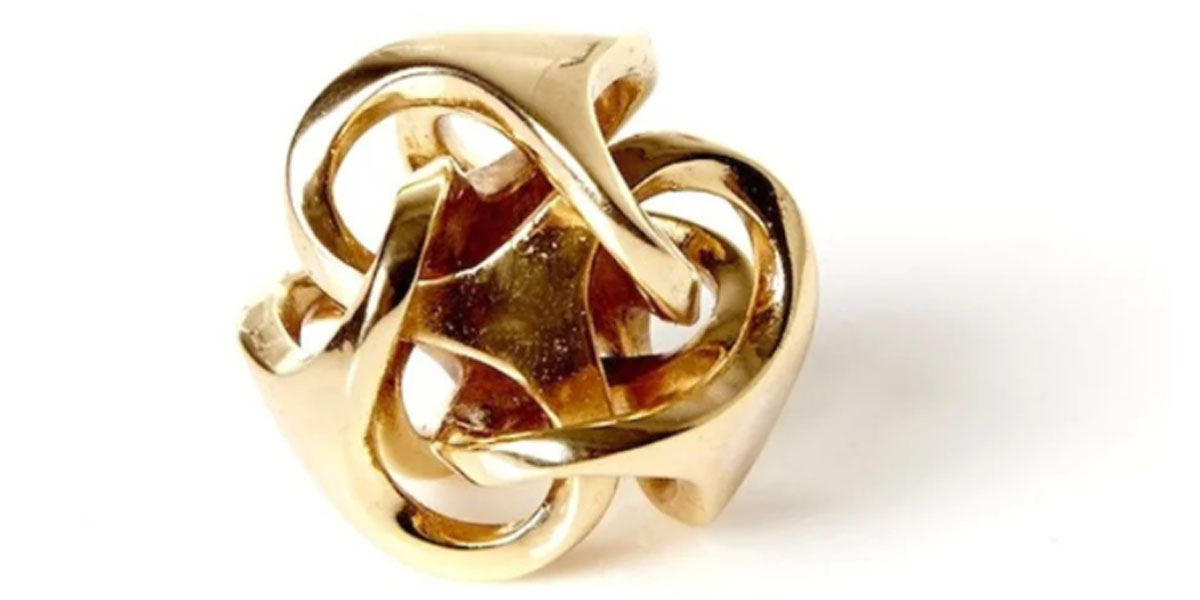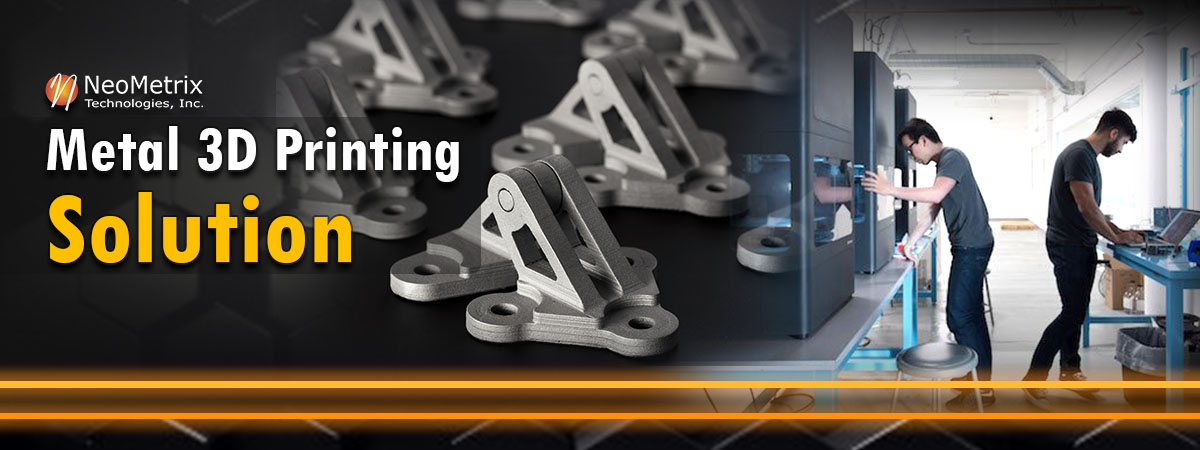
Throughout the past 5 years, the additive manufacturing industry has seen extreme advancements in metal materials, new technologies, and lower-cost metal printers. Now more than ever, we’re seeing more applications of metal 3D printing in a wide range of industries from manufacturing, to healthcare, to aerospace.
Let’s look at WHY companies are turning to metal additive manufacturing, then take a look at WHAT kinds of objects are printed as well as their everyday applications.
Markforged Metal X – Design fully funtional metal parts
Thales Alenia Space, the France-based aerospace supplier, prints these antenna fixation brackets for satellites with 3D Systems. (Source: 3D Systems)
Today, most new products – from roller skates to air craft parts – are digitally designed. And while producing the design, all manufacturing methods must be considered. However, engineers designing for 3D printing no longer have to concern the constraints of traditional metal part fabrication, and design to optimize a part’s functionality while at the same time reduce material, time, and cost.
For example, take mechanical parts like robot arms or support structures like airplane walls; engineers use software to simulate mechanical stresses and design parts with strength just where needed. These parts perform better than traditional manufactured pieces that appear more solid. These 3D printed parts reduce the amount of metal required, lowering cost and weight.
In this case study by Materialize, a 3D printing service and software provider, the company redesigned a robotic suction gripper to cost less than a third and weigh a quarter of the original, and it needs no assembly. AMAZING!
Because metal 3D printing can create parts within parts, engineers are able to design a complex assembly in one piece. This saves time and labor to assemble parts or perform processes such as welding, and increases efficiency of the final part. The SpaceX SuperDraco rocket engine assembely, for example, is 3D printed in less parts than the previous casted metal version.
However, lets put design aside for now, and look at metals.
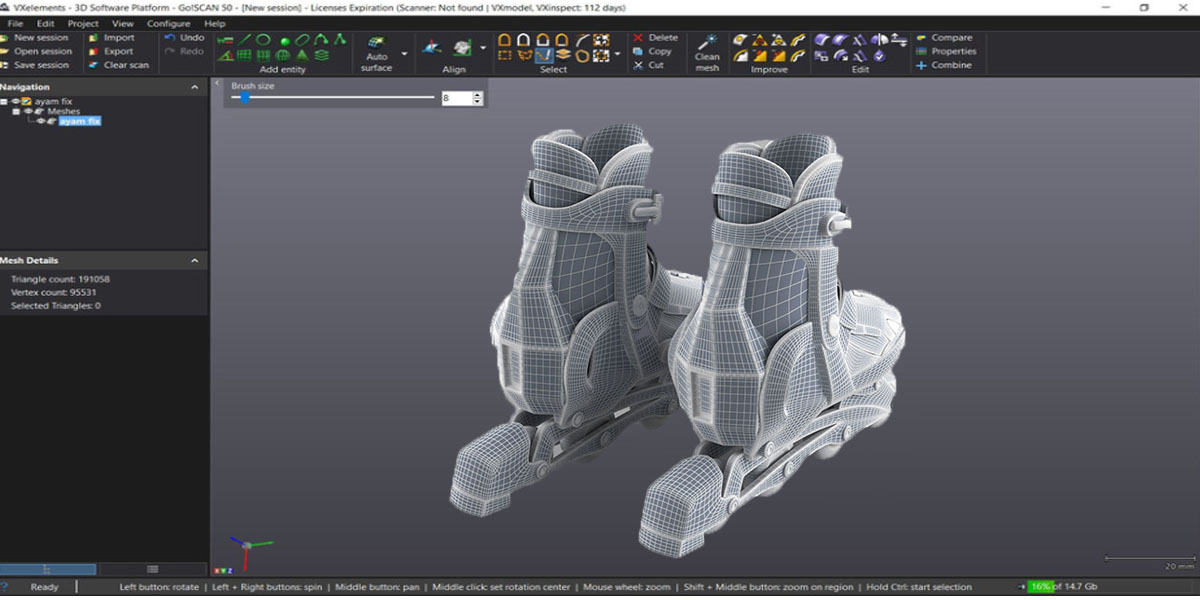
Objects digitally designed before manufacturing.
Laser metal fusion is an additive manufacturing method where a part is built up gradually in a metal powder bed. (Source: Trump)
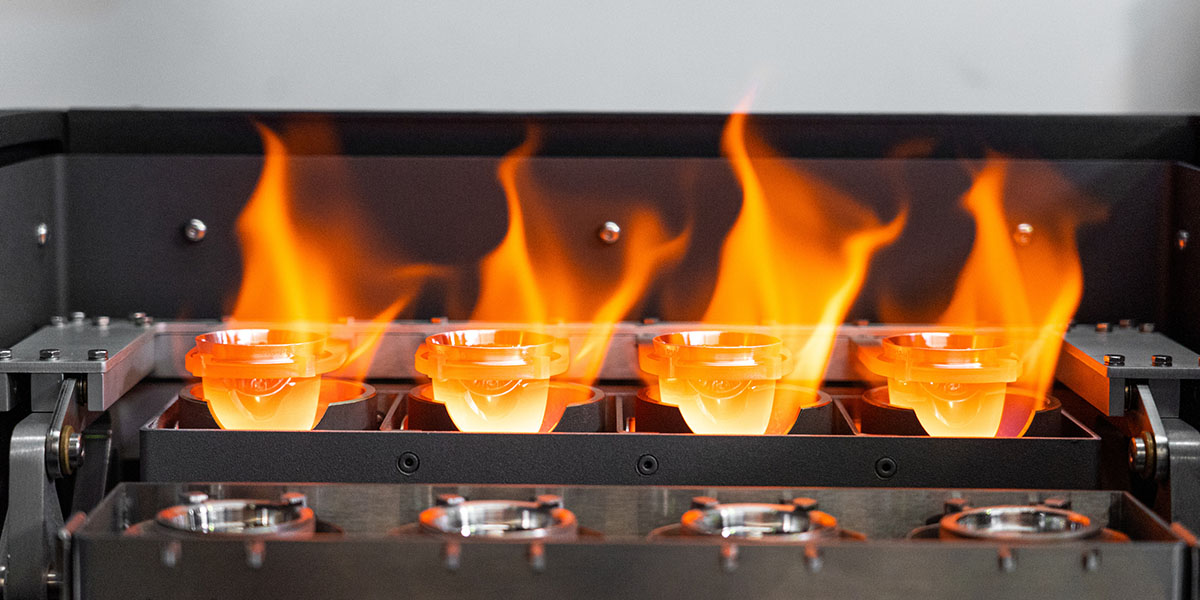
Inconel 625 is a nickel-based superalloy that can withstand temperatures of up to roughly 1000C.
Dozens of metals and high-performance alloys are available for 3D printing with some exclusive to 3D printing. From a wide range of stainless steels for hardness and strength to titaniums that are biocompatible and lightweight, the list includes cobalt chromes, alumiums, nickel-based alloys, gold, silver, platinum, copper, and more. The number of metal purveyors offering lines of proprietary metals alloys for additive manufacturing is quickly growing, which in result expands the application possibilities.
Metal for 3D printing is typically in powder form and, as such, has a much higher price similar material used in machining. However, because 3D printing is an additive manufacturing technology not a subtractive one, such as milling, less material is needed and less material is wasted.
Old doubts and ideas about the strength, integrity, and durability of additive manufacturing metals are fading as more parts are put to the test in aerospace, manufacturing, surgical implants, and virtually everywhere metal is used.
Now that we’ve covered some of the reasons why companies are choosing to 3D print with metal, let’s take a look at what they print and their everyday applications.
TOP 5 APPLICATIONS FOR METAL 3D PRINTING
1) Low-Volume & Specialty Parts
This is the largest and broadest area of applications for metal 3D printing. Covering everything from manufacturing equipment to high-end bicycle frames to specialty robotic parts, it has become an every day tool to create and produce professional grade objects.
Companies choose 3D printing method in instances where advanced engineering software has uncovered a better, more efficient and accurate part design that can only be produced by the method of 3D printing. With complex designs, such as this hydraulic manifold shown above, often the only method the get the most precise result is 3D printing.
Similarly, when a specialty metal part requires additional metal tools to create the part along with additional processes, like welding or assembly, 3D printing is often the faster and more efficient solution. As volume production of a part increases, however, the cost benefit of metal 3D printing decreases, which is the basis for this category. Some manufacturers, such as BMW, have turned to 3D printing mass production parts, but it remains a niche for metal 3D printing.
Take a look at these companies that turned to metal 3D printing for low-volume and specialty parts:
- NASA produced a metal 3D printed rocket engine fuel pump using 45% fewer parts than pumps made with conventional manufacturing.
- Bathroom fixture company Grohe offers design-loving consumers a 3D Printed Tap that uses 50% the material of traditionally produced products.
- Looking to prolong the life of critical parts, Ulterra, an oil and gas industry parts manufacturer leveraged additive manufacturing from ExOne to produce a larger volume of wear-resistant parts at a lower cost than traditional methods.
- GE Aviation 3D prints sleek turbine blades for the GE9X, the world’s largest jet engine for Boeing’s next-generation 777X jets.
- Porsche completed an endurance test of 3D printed pistons in the engine of the 911 GT2 RS and found the printed aluminum alloy pistons match (and even exceed) that of comparable cast or forged parts. Lighter pistons translate into an increase of about 30 hp.
- Nik Huber Guitars offers a metal 3D-printed electric guitar bridge that produces sound quality not possible with traditional parts.
- By adopting metal 3D printing from Voestalpine, tool maker Eisenhuth saw drastic improvement
in both cycle time and product quality, and reduced the overall mass of the tool. - Thales Alenia Space and 3D Systems produce titanium brackets for satellites that are 25% lighter and feature a better stiffness-to-weight ratio than those
TOP 5 APPLICATIONS FOR METAL 3D PRINTING
2) Funtional Metal Prototypes
From golf clubs to door hinges, printing a metal prototype that functions exactly like the final machined metal part is another top application of metal 3D printing.
Strong metal prototypes 3D printed in their final metal material provide engineers and designers with a proof of concept that goes beyond look and feel; a product’s usability, ergonomics, ability to be manufactured, and overall experience can be put to the test. The high cost and long lead times of milling or molding just a few metal parts is a common barrier to metal prototypes. Metal 3D printing, however, requires no tooling, little machine setup, and production is typically faster (a few days compared to a few weeks for milling), enabling engineers to explore more designs in a shorter period of time and simplify their product development cycle. In fact, designers can typically put out iterations at a fraction of the time compared to traditional methods.
Take a look at these companies that turned to metal 3D printing for prototypes:
- Lumenium, a Virginia-based company developing innovative internal combustion engines, reduced their product development timeline by 25% with metal 3D printing from Digital Metal.
- Global kitchen and bath fittings manufacturer discovers the economy of rapid manufacturing to fast track prototypes with unique features, reduce casting development steps, and perform low-batch production while cutting costs.
- Shukla Medical uses its Markforged Metal X to create surgical instrument prototypes for surgeons to test before production.
TOP 5 APPLICATIONS FOR METAL 3D PRINTING
3) Spare & Obsolete Parts
Volkswagen automotive spare parts metal 3D printed by Spare Parts 3D. (Source: Spare Parts 3D)
Whether temporary replacements or permanent spare parts, having the ability to print critical parts onsite and on-demand makes metal 3D printers a smart investment for a wide range of organizations and business. The global pandemic only made the case stronger for shortening the supply chain from other areas of the world and having essential parts locally available.
For original equipment manufacturers, there’s a virtual revolution brewing for their spare parts management. Instead of warehousing thousands of spare parts, manufacturers can host a digital print-on-demand inventory, saving space and workload. Metal 3D printing can produce physical parts from digital files in a matter of hours or days for larger parts.
Metal 3D printing is extending the lifespan of discontinued equipment and expanding repair possibilities for a host of obsolete machines. Combined with 3D scanning to reverse engineer parts and create digital models, today’s technology can not only produce a spare part when no part exists, but even improve upon the part, often reducing weight and the amount of material used.
Take a look at these companies that turned to metal 3D printing for spare parts:
- Porsche uses 3D printing to produce spare parts for its rare and classic cars, making a wide selection of high-quality rare parts available to its customers at a fraction of the cost.
- Deutsche Bahn created construction templates for metal 3D printing from existing drawings and scanned objects to produce spare parts for older trains at the push of a button.
- U.S. Marine Corp approved a process for 3D-printing tank spare parts when the original part wears or becomes inoperable and a new machined part cannot be received quickly.
- Through metal 3D printing, ArcelorMittal, a multinational steel manufacturing corporation headquartered in Luxembourg, has been able to print on-demand ready-to-use spare parts reducing the need for stocks.
- Mercedes-Benz offers 3D printed metal replacement parts from its digitized catalog.
TOP 5 APPLICATIONS FOR METAL 3D PRINTING
4) Surgical & Dental Implants
Volkswagen automotive spare parts metal 3D printed by Spare Parts 3D. (Source: Spare Parts 3D)
The medical device category of metal 3D printing applications is huge, not only in scope but in volume. In terms of project applications for metal 3D printing, healthcare leads the pack, with everything from dental crowns and bridges to hip implants at the top of the list, according to the 2019 report “Healthcare – the Backbone of Additive Manufacturing” by additive manufacturing research firm SmarTech.
Although dental labs utilize quite a bit of 3D printing with plastics to create molds and ceramics to produce tooth replacements, 3D printing final metal stainless steel implants is also growing.
Apart from dentistry, the number of 3D printed metal parts that can be implanted into the human body is nothing short of astonishing. From bone replacements to cranial implants to vascular stents, the essential benefits of necessary 3D printed body can help improve the quality of many peoples lives, and potentially save lives..
Surgeons, increasingly dissatisfied with the limitations of off-the-shelf parts, are helping drive a movement toward made-to-order implants customized for a patient’s unique needs. The shape of many 3D printed implants are either impossible or difficult to produce with traditional tooling. For example, the hexagonal porous structures of hip-replacement sockets that enable bone growth and increase stability can not be produced accurately with traditional tools.
Take a look at these companies that turned to metal 3D printing for implants:
- Swift Dental Group in the UK moved from traditional casting to 3D printing metal dental parts parts to increase production efficiency without the loss of accuracy using printers from Renishaw.
- Stryker, one of the world’s leading medical technology companies uses 3D printing to create their top selling knee and hip replacements.
- Toughware Prosthetics needed to develop lightweight, complex parts made of bronze-infiltrated stainless steel that were not able to be cast or created with conventional machining methods.
- Graft3D Healthcare Solutions in Chennai, India, used 3D Systems software and metal 3D printing to create a patient-specific titanium jaw implant.
- AK Medical deploys a fleet of eight GE Additive Arcam EBM additive manufacturing machines to address the China’s growing need for orthopedic implants.
TOP 5 APPLICATIONS FOR METAL 3D PRINTING
5) Jewlery & Decorative Arts
The Ora Pendant by designer Bathsheba Grossman printed by i.materialise. (Source: i.materialise)
Artists stretch the boundaries of design with 3D printing in mind, especially jewelers, who use the technology to print final pieces out of precious metals. Complex and delicate geometric designs, not possible through traditional methods, enable jewelers to offer unique and profound creations.
Jewelers have flocked to 3D printing with plastics for investment casting patterns, which are cheaper and faster to produce than traditional methods, while 3D printing with precious metals is less popular. Yet with the growing competition among online print-to-order service bureaus, such as CraftCroud, prices are going down and becoming more affordable.
Take a look at these companies that turned to metal 3D printing for jewelry:
- Arlid Links, a cutting-edge boutique jewelry company, 3D prints exquisite jewlery out of metal powder made from destroyed illegal firearms seized in conflict zones.
- Brazilian jewelry designer, Veronica Nunes, teamed up with 3D printing service bureau Star Rapid to create stunningly intricate designs.
In conclusion, metal 3D printing presents an alternate method of manufacturing that opens up limitless opportunities that previously could not be afforded or physically produced. For more information and to learn more about our top of the line and professional grade metal 3D printer, check out the Markeforged Metal X.
Original Source: https://all3dp.com/1/metal-3d-printing-top-applications/


